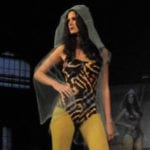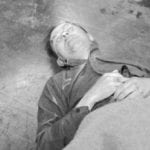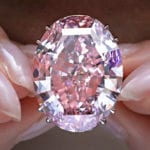 Weird Stuff
Weird Stuff  Weird Stuff
Weird Stuff  Mysteries
Mysteries 10 Tragic Disappearances and Deaths in Joshua Tree National Park
 History
History 10 Ways Childhood Really Sucked in the Old West
 Music
Music 10 Name Origins of Famous Bands from the 1990s
 Religion
Religion 10 Biggest Turnarounds by the Catholic Church
 Weird Stuff
Weird Stuff 10 Unbelievable Times Laws Had Unintended Consequences
 Humans
Humans Ten Historic Women Who Deserve Way More Credit Than They Got
 Movies and TV
Movies and TV 10 Films That Spawned Major Lawsuits
 History
History Ten Times Towns Were Wiped Off the Face of the Earth
 Creepy
Creepy 10 of the Most Disturbingly Haunted Public Houses in the UK
 Weird Stuff
Weird Stuff 10 Niche Subcultures That Are More Popular Than You Might Think
 Mysteries
Mysteries 10 Tragic Disappearances and Deaths in Joshua Tree National Park
 History
History 10 Ways Childhood Really Sucked in the Old West
Who's Behind Listverse?

Jamie Frater
Head Editor
Jamie founded Listverse due to an insatiable desire to share fascinating, obscure, and bizarre facts. He has been a guest speaker on numerous national radio and television stations and is a five time published author.
More About Us Music
Music 10 Name Origins of Famous Bands from the 1990s
 Religion
Religion 10 Biggest Turnarounds by the Catholic Church
 Weird Stuff
Weird Stuff 10 Unbelievable Times Laws Had Unintended Consequences
 Humans
Humans Ten Historic Women Who Deserve Way More Credit Than They Got
 Movies and TV
Movies and TV 10 Films That Spawned Major Lawsuits
 History
History Ten Times Towns Were Wiped Off the Face of the Earth
 Creepy
Creepy 10 of the Most Disturbingly Haunted Public Houses in the UK
10 Fascinating Ways The Nazis Influenced Fashion
The Third Reich left a lasting imprint on the world. The legacy of Adolf Hitler and his Nazi Party is almost impossibly vile and vast. Starting the biggest war this planet has ever seen while committing multiple genocides on an unprecedented scale is a surefire way to stick in the minds of people forever. But Nazi Germany’s influence exists in all sorts of other peculiar ways as well.
SEE ALSO: 10 Times The Nazis Tried To Use Supernatural Powers
Here is a list of 10 ways the Fuhrer and his collaborators influenced the world of fashion.
10 They Cared About Style
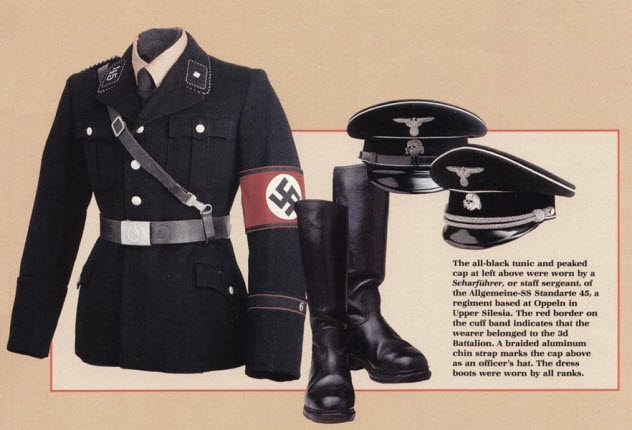
The Nazis may well have been as close to evil as we have ever seen, but they understood branding. Senior Nazi and Reich Minister of Propaganda Joseph Goebbels knew all about the power of appearance. He knew that scruffy combat fatigues instill very little fear in people. But pristine uniforms tailored to make the wearer look as tall, broad, and imposing as possible have an intense impact.
Goebbels was a stickler for precision, especially when it came to fashion. It is rumored that he owned hundreds of suits so that he would never have to wear the same one twice in any given calendar year.[1]
By insisting on having such a recognizable look, Goebbels was instilling in the Nazis a strong brand presence. Never before had military aggression and fashion come together so forcefully. And it made a big impact. The world of high fashion has shown signs of military—and specifically Nazi—influence ever since.
9 Their Uniforms Are Now The Go-To For ‘Evil’

Since their birth in the 1930s, Nazi uniforms have served as a benchmark for “evil” costume design. Given the scope of their crimes and the staggering level of atrocities the Nazis were responsible for, it is no huge surprise that modern fiction often stylizes its villains as Nazi-esque.
Nazism is an easy signifier for audiences that the bad guys are, well, bad. We have seen it time and time again in film. Take George Lucas’s The Empire Strikes Back, for example. The Galactic Empire in their military-style getups could easily be mistaken for being Third Reich. Lucas has even admitted as much:
“The Nazis are basically the same costume as we used in the first film, and they are designed to be very authoritarian, very Empire-like.”[2]
8 Coco Chanel
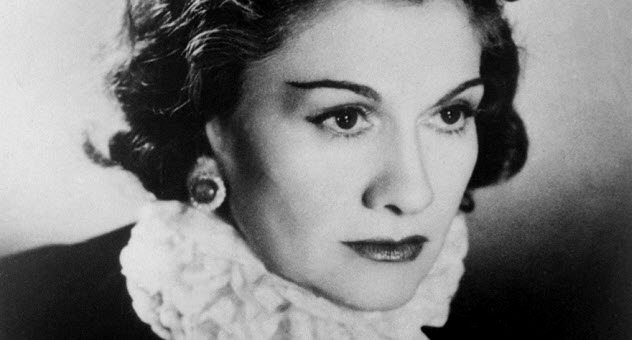
When Hitler’s men began invading Europe, Gabrielle Bonheur Chanel was already an established and respected fashion designer. Better known by her nickname “Coco,” she had pioneered the svelte and iconic “little black dress.” But the Nazi occupation of France was to catapult her to superstardom. And in the most unusual way.
Instead of resisting or going into hiding, Chanel decided—effectively—to embrace Nazi rule. She took a German lover by the name of Hans Gunther von Dincklage and became a spy, helping recruit for the Third Reich.
After the war ended, far from being shunned for her behavior, Chanel was quickly established as the foremost French fashion designer of the day. And she wasted no time in building her empire. If anything, the rumors of her association with Nazi Germany gave the Chanel brand publicity and even, strangely, an air of mystique and invulnerability.[3]
7 Toothbrush Mustaches

It seems ridiculous now, but people once loved the toothbrush mustache. Were it not for Adolf Hitler’s adoption of it, we might see it adorning the upper lips of men today. Pre-Fuhrer, it was a popular style of mustache. Oliver Hardy and Charlie Chaplin—two of the biggest stars in the world at the time—both wore one with pride and inspired men across the world to follow suit.
It wasn’t Chaplin that influenced Hitler to trim his facial hair into the shape of a toothbrush, though. That is an urban myth. Initially, Hitler wore his mustache long, in the popular handlebar style. But, while fighting in The Great War, it would get in the way of his gas mask. So he trimmed it down to fit. And kept it like that.[4]
6 Hugo Boss
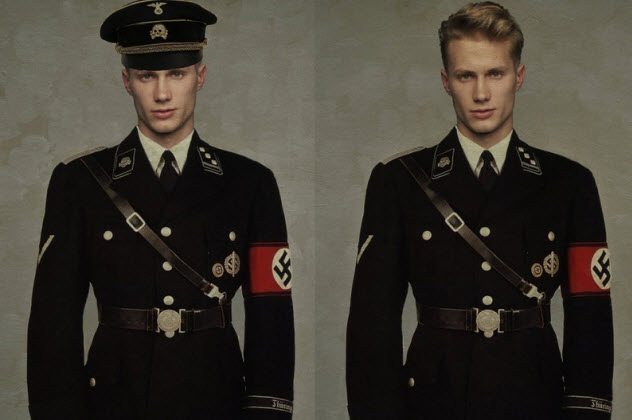
We told you earlier how Joseph Goebbels made sure that Nazi officers always looked the part. And that was never more true than when he oversaw the design and production of the uniforms for the most feared of all the Nazi military units, the Schutzstaffel (better known as the “SS”).
The sight alone of the black dress uniforms and the sinister Death’s Head Skull on their caps was enough to cause terror. Black being, historically, an evil-oriented color. And Death’s Head Skulls being, well, Death’s Head Skulls.
Goebbels instructed Munich-based outfitter Hugo Boss and his staff to create the SS uniforms. Boss was already producing the infamous “brown shirts” at the time anyway (as worn by the Sturmabteilung, the feared paramilitary wing that met its end in the bloody left-wing purge of 1934 known as “The Night of the Long Knives”).
And when high-ranking Nazis told you to do something, you did it. So it is difficult to lay too much blame at Boss’s door. Although he did go on to preside over a production line that used almost entirely forced labor.
A lot of you out there probably still buy Hugo Boss suits, cologne, and sunglasses. But would you if you truly knew their role in World War II? If it helps, they have since apologized for what happened.[5]
5 Dior
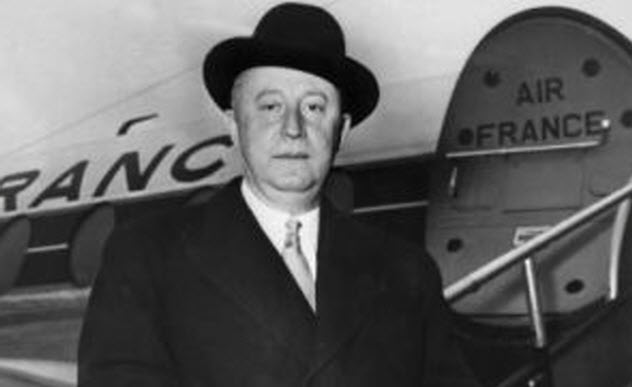
Even while his sister served in the French Resistance and was captured by the Gestapo, fashion designer Christian Dior kept his head down and worked for the Nazis, often making dresses and outfits for the wives of high-ranking officers. Some saw him as a traitor and a shill for working for the Germans. But as he saw it, he was just doing what he had to do to keep French high fashion alive.
Before World War II, Dior was working as a designer for a respected fashion house run by Lucien Lelong. But the experience of the Nazi occupation of France and his newfound mission to preserve France as the home of fashion was enough to encourage Dior to set up his own fashion house. And in doing so, he became a household name across the world.[6]
4 Louis Vuitton
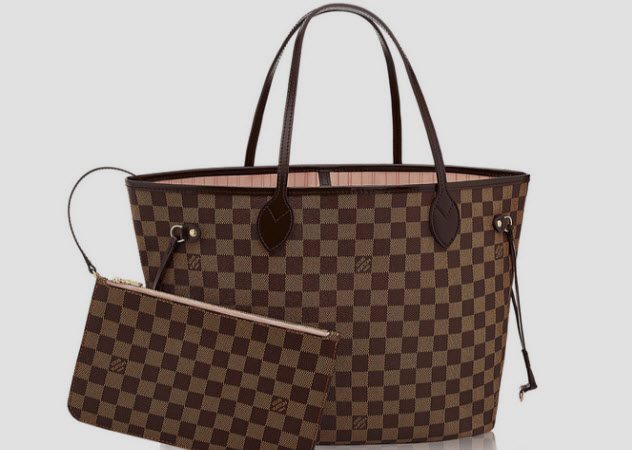
Louis Vuitton handbags are one of the most iconic and famous handbags on the planet. When the Nazis invaded France in 1940 and the Vichy State ruled the country, most brands were oppressed and their stores closed down.
But Louis Vuitton thrived throughout the entire occupation and war. In fact, they were the only brand given permission to operate a store on the ground floor of Hotel du Parc, where France’s puppet government operated during the early 1940s.
The French brand got these allowances through openly, brazenly, and shamelessly cooperating with the Nazis. While Louis Vuitton’s competitors either refused the deal, went into hiding, or went out of business, they stayed afloat. After the war, the market was theirs for the taking.[7]
Would Louis Vuitton have the market position it enjoys now had Hitler & Co. not pushed out or forcibly closed all its business rivals?
3 Anti-Authority Subcultures
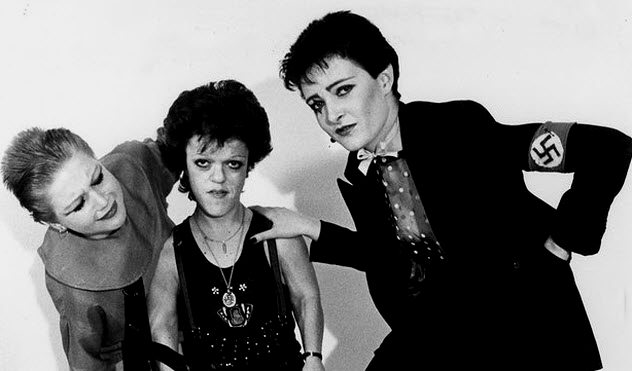
The primary motif of the Nazi regime was the swastika. An equal-armed cross with arms jutting out at right angles, it was once an ancient and sacred symbol of peace. Until Hitler and his goons got their hands on it.
They repurposed it, and the swastika has been stigmatized ever since. Such is the simple design’s ability to offend on mere glimpse, it is sometimes used by people who wish simply to shock an audience.
Biker gangs of the 1960s and ’70s used swastikas, iron crosses, and SS-style lightning bolts as insignia on their clothing. Performance artists have borrowed iconography from the Nazis ever since the end of the war, too. And let us not forget the proliferation of swastikas and other Nazi symbols when punk rock exploded in the late 1970s.
While bikers and punk rockers have flirted with neo-Nazism, the images have mostly been employed to merely shock and offend. A sort of “art through provocation” affair.[8]
2 Asian Pop Culture
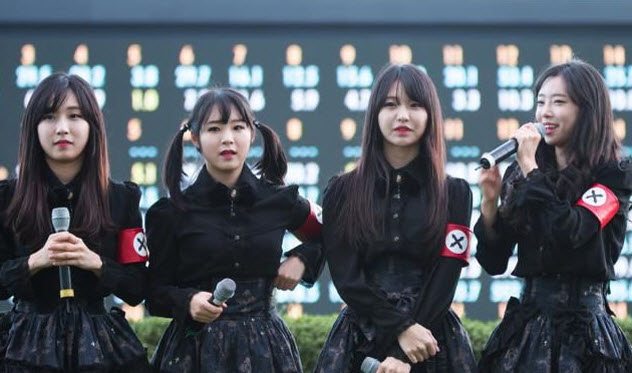
Have a drink in an Indonesian cafe, go watch a Japanese girl band perform, or attend a school parade in Taiwan and you may find something really quite disturbing . . . overt and unabashed Nazi imagery on display. Those examples are all real, by the way.
Back in 2013, widespread controversy and condemnation forced an Indonesian cafe owner to shut down his Nazi-themed bar in Java. Sony had to apologize in 2016 after one of their acts, a popular girl band called Keyakizaka46, performed a concert all dressed as SS officers.[9]
And somehow, Hsinchu Kuang-Fu High School in Hsinchu City, Taipei, managed to design, create, and stage an entire anniversary parade themed around Adolf Hitler before anyone realized that it was not an appropriate thing to do.
Education in Asia surrounding World War II mostly focuses on the events that concerned the continent. The wider context and, specifically, the horrors of the Holocaust are rarely touched upon. So a whole generation of children in Asia is growing up ignorant of just what the Nazis did in Europe in the 1930s and ’40s.
The true gravity of events might be lost on many young Asians, but the clothes, insignia, and symbolism are all still familiar. Swastikas and salutes have bled into modern culture somehow.
It might be slightly naive to assume that there isn’t a hint of rebellion in this “Nazi chic” craze. But there doesn’t seem to be a whole lot of malice involved in this superficial adoption of Nazism.
Understandable? Perhaps. But is it excusable?
1 An End To ‘Boyish’ Women’s Fashion
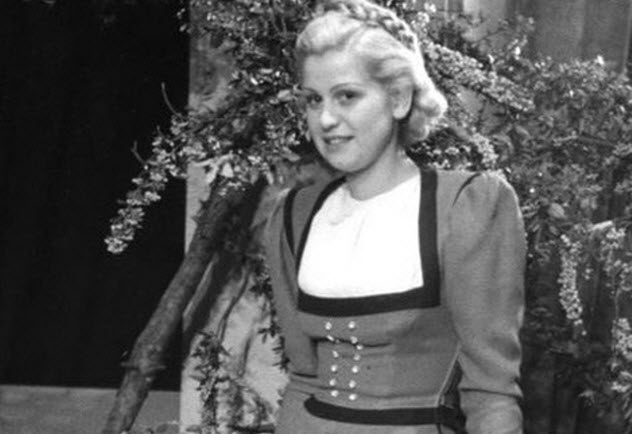
Germany was a prominent player in European fashion in the 1920s. Before the Nazis, Berlin and Munich were epicenters of design and high-end clothing. But when Hitler came to power, he sought to reshape the national image of the German woman.
Hitler preferred women to dress sensibly and plainly. His argument was that the true Aryan beauty of the German woman should shine through. They didn’t need make-up, fingernail polish, or elaborate dresses.
The dictator believed a Nazi-controlled fashion industry would aid German victory in the war effort. To this end, the Nazis established the Deutsches Modeamt (“Reich Fashion Bureau”) to control how German women dressed. Under the Bureau rules, women were permitted to wear only German-made clothing crafted with German materials.[10]
The fashion style of the time, pioneered by designers like the French Nazi-sympathizer Coco Chanel, was for a more “boyish” look. This meant shorter hair and clothes that made women look slimmer. Hitler liked women to have a more round, “fertile” look, believing this would lead to more offspring for the Reich. Full bust, shapely legs, and curvaceous figures.
And through the Reich Fashion Bureau, Hitler got his wish. It was Auf Wiedersehen (“goodbye”) to the boyish look.
Dean Stephens is the founder and editor of men’s lifestyle website, TheAdultMan.com.
Read more about the bizarre cultural influences of the Nazis on 10 Works Of Art The Nazis Deemed ‘Degenerate’ and 10 Bizarre Stories Of Nazi Archaeology.
